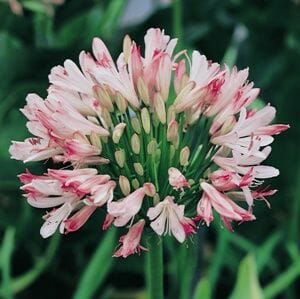Expanding Agapanthus: A Total Guide to Beautiful Blooms
Expanding Agapanthus: A Total Guide to Beautiful Blooms
Blog Article
Grasping the Art of Agapanthus Care: Necessary Steps for Healthy Growth and Dynamic Blooms
In the world of horticulture, the growing of agapanthus stands as a rewarding endeavor for those who seek to support these classy blooming plants. With their striking blossoms and elegant vegetation, agapanthus has actually caught the interest of garden enthusiasts worldwide. However, attaining optimal development and lively blooms needs a nuanced approach that encompasses various important steps. From picking the ideal range to grasping pruning techniques, the journey in the direction of growing thriving agapanthus plants is diverse and holds the essential to unlocking the complete potential of these agricultural treasures.

Picking the Right Agapanthus Variety

When picking the right Agapanthus selection for your yard, consider factors such as climate suitability, flower color, and growth behavior. Agapanthus, generally called Lily of the Nile or African lily, comes in a selection of shades varying from shades of blue and purple to white. Pick a bloom color that matches your existing garden scheme to develop an unified landscape. In addition, consider the environment in your region to ensure the Agapanthus range you choose can flourish in your specific problems. Some selections are more tolerant of chilly temperatures, while others prefer warmer environments. Recognizing the growth routine of different Agapanthus varieties is important for appropriate positioning within your garden. Some varieties have a clumping growth routine, perfect for containers or boundaries, while others have a more dispersing nature, ideal for ground cover or mass plantings. By meticulously assessing these aspects, you can pick the excellent Agapanthus variety to boost the appeal of your garden.
Perfect Planting Conditions
Considering the optimal environmental demands is necessary for successful Agapanthus cultivation. Agapanthus grows in well-draining soil with a somewhat acidic to neutral pH level. When planting, pick a location that obtains full sunshine to partial shade. In hotter environments, offering some afternoon color can prevent scorching of the fallen leaves. Agapanthus plants are delicate to chilly temperatures and need to be secured from frost throughout cold weather.
To make sure healthy and balanced growth and vibrant blooms, plant Agapanthus bulbs at a depth of regarding 2-4 inches and area them 8-12 inches apart. Including raw material, such as compost, to the soil can boost drainage and fertility, advertising durable root advancement. Mulching around the base of the plants helps retain dampness and subdues weed development. Normal watering is crucial, especially during the expanding period, to keep the dirt regularly moist but not waterlogged.
Watering and Feeding Tips
Preserving correct wetness levels and giving vital nutrients are key aspects in the treatment program for Agapanthus plants. When it comes to sprinkling Agapanthus, it is essential to strike a balance. These plants like constantly wet soil however are susceptible to root rot if overwatered.
Feeding Agapanthus is necessary for promoting healthy and balanced development and prolific blooms. Apply a well balanced plant food, such as a 10-10-10 formula, in the early springtime as brand-new growth emerges. Repeat this application every 6-8 weeks throughout the growing period. Avoid extreme fertilization, as it can bring about rich foliage at the expenditure of blooms. Always adhere to the supplier's directions for correct dilution and application techniques. By adhering to these watering and feeding tips, you can guarantee your Agapanthus plants flourish and generate lively, durable blooms.
Pruning Methods for Agapanthus
Pruning Agapanthus plants at the proper times and with correct techniques is critical for keeping see post their health look at this site and promoting ideal development and flowering. The perfect time to prune Agapanthus is in late winter months or very early spring before brand-new development emerges.
Deadheading spent blossoms can also redirect the plant's energy into creating more blossoms rather than establishing seeds. If you desire to accumulate seeds for propagation, leave some flowers to dry and fully grown on the plant.
Remember to use clean, sharp devices to make accurate cuts and decrease the risk of introducing diseases. Agapanthus. Routine trimming will aid keep your Agapanthus looking healthy and cool while making sure a bountiful display screen of lovely blooms
Managing Typical Bugs and Diseases
After making sure appropriate pruning strategies for Agapanthus, it is vital to attend to usual bugs and conditions that can influence the health and vigor of these plants. One typical bug that impacts Agapanthus is the Agapanthus gall midge.
Another typical issue is fungal fallen leave place, which presents as dark sores on the fallen leaves. To avoid fungal illness, make sure good air flow around the plants, stay clear of overhead watering, and remove any infected leaves without delay. Additionally, Agapanthus plants can suffer from origin rot if they are grown in improperly draining dirt. To stop this, plant Agapanthus in well-draining dirt and prevent overwatering. By being alert and taking punctual activity versus insects and illness, you can aid your Agapanthus plants grow and generate vibrant blooms.

Conclusion
In verdict, grasping the art of agapanthus treatment involves selecting the ideal range, offering perfect planting problems, proper watering why not find out more and fertilizing, appropriate trimming methods, and dealing with common insects and conditions. By following these vital steps, you can ensure healthy growth and vivid flowers for your agapanthus plants. Remember to routinely keep an eye on and keep your plants to advertise their general health and durability.
To make sure healthy and balanced growth and vibrant flowers, plant Agapanthus bulbs at a deepness of concerning 2-4 inches and room them 8-12 inches apart. By complying with these watering and feeding tips, you can guarantee your Agapanthus plants prosper and produce lively, long-lasting flowers.
One usual insect that influences Agapanthus is the Agapanthus gall midge. In addition, Agapanthus plants can suffer from root rot if they are grown in improperly draining pipes soil. By adhering to these important steps, you can ensure healthy and balanced development and dynamic blossoms for your agapanthus plants.
Report this page